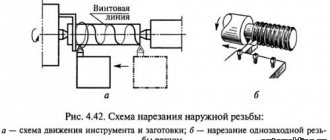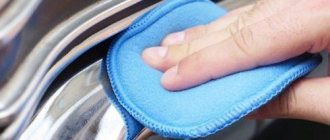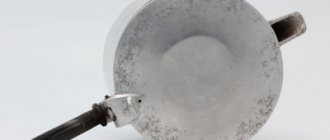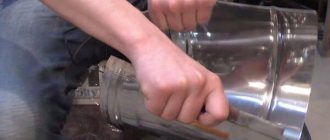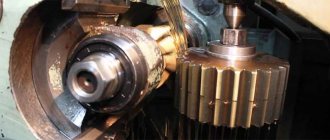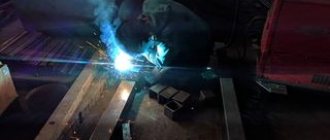Surprisingly, any conversation about everyday life in the army and service brings a silent smile from former soldiers. Although many conscripts view the army as a way of aimlessly spending time, after such a school of life usually only good memories remain.
Military service is not only the direct fulfillment of military duty, but also self-education, revaluation of values, faithful friendship and holy traditions.
Let's look at how and what to clean a belt plaque while serving in the army, what proven methods and methods are available, and detailed instructions for use.
Some nuances of demobilization rituals
The army is very strict about the state of uniforms, so servicemen while away their free time with a needle and thread in their hands. But the most memorable procedure is cleaning the military belt plaque. The absence of darkening on the metal surface, characteristic of the oxidation process, is considered a sign of excellent condition of the belt, which is checked daily. But the soldier’s badge, cleaned to a shine, has already become a kind of attribute, especially for those who are about to demobilize.
Woe to that soldier who, during his entire service, was unable to properly prepare his military uniform and demobilization album for arriving home in all its glory, and in this series of preparation activities he must clean the badge in the most spectacular way. This tradition dates back to the Soviet army. Currently, there is no such concept, since the belt is represented by an ordinary belt, and in some variants of the form it is generally replaced by garters.
Thus, all soldiers are required to maintain the elements of their uniform in proper form, and cleaning the belt goes from an obligation to a tradition, and before demobilization it is one of the main preparatory procedures.
Initially there is a layer of paint on the buckle. Reservists are surprised to see that today many demobilized people still have this paint intact.
Wisdom from modern times
Apart from the listed products, the soldier of the Soviet army had nothing at hand, therefore the list of three cleaning products was considered as a huge variety for activity. A modern military man, if desired, will choose the most affordable or convenient way to clean a belt buckle or other metal decor.
- Hydrogen peroxide must be mixed in equal quantities with plain water, and then ammonia must be added to the resulting solution. The prepared environment is considered quite aggressive, but you will still have to soak the metal for several hours. After such a “bath”, the top layer is cleaned with a brush and then washed with clean water.
- Folk wisdom in the use of citric acid also came to military craft. The acid packet should be diluted in water. Having placed the plaque there, bring the water to a boil and continue this process for about 10 minutes.
- For those who do not have any funds at hand, potatoes will come to the rescue. Or rather, it is not the potato itself, but its decoction that can clean metal. The algorithm is similar to the previous case. The product needs to be boiled for several minutes.
Finally, the most modern cleaning method should not be overlooked. Considering the large number of dismissals, the presence of some money from the soldier, the lack of wise experience, the service of a jeweler is noted as a way to clean the plaque.
He will do all the work quickly and not very expensively. But the whole process loses its flavor and ritual status, although these concepts most likely disappear along with the disappearing symbol of the five-pointed star.
Author's rating
Author of the article
Vitaly Ryabov
I have conscription service behind me, and then contract service. Now retired.
Articles written
272
How do they clean plaques in the army?
There is no special time, desire, or even opportunity to use sophisticated methods of cleaning plaques in the army using folk remedies or expensive specialized chemicals, so you can clean the plaque either with what they give you or with what is at hand.
The leader in popularity - also because the army usually gives it out for free - is GOI paste, developed back in the 40s, which is based on abrasive chromium oxide powder. The paste is very dense and green in color. It is used not only for cleaning plaques, but also for polishing any other metal surfaces, depending on the size of the abrasive.
Also popular is the “Asidol M” product, which is now often used by numismatists to clean found coins. This product is already whitish in color, is a petroleum product and works rather by corroding the oxide layer than by scraping it off with an abrasive.
Well, the most popular material at hand is tooth powder or toothpaste, which also contain abrasive particles. True, polishing with paste will take a little more time: the abrasive in it is very fine, so now it will take longer and harder.
To thoroughly clean the space inside the star, the army usually uses a used toothbrush or even a needle for particularly difficult places.
How to clean wax: ways to get rid of impurities in beeswax at home, video
- Wipe the impregnated surface dry (the abrasive stops working when it comes into contact with moisture).
- Shake the bottle and spray the liquid onto a metal object.
- Leave for 1-3 minutes depending on the intensity of the contamination.
- Wipe with a cloth or short-bristled brush.
- Rinse the substance off with water.
There must always be water in the samovar. This is especially important when it is hot. If this condition is not met, then after a while the bowl will begin to leak. If the device is installed outdoors, there should be no water in it during the winter. It is clear that at sub-zero temperatures the water will freeze, which will lead to the appearance of microcracks. Restoring such a rarity will be quite problematic.
How to clean GOI paste
If you have GOI paste on hand, it’s better to take it. It is specifically designed for this. However, to obtain the desired result, you must act according to certain rules.
So how do you use the paste? First of all, you need to inspect the plaque for scratches. If there are any, the paste may simply get stuck in them, creating green streaks. Then it will have to be removed with a needle or something else.
If there is no severe damage, you just need to take a rag and apply the paste to it. After this, all that remains is to polish the plaque for a couple of minutes to get an excellent result. It’s worth noting right away that GOI paste gives a shine that lasts a long time.
In addition, it is sometimes sold in the form of ready-made felt circles with the product applied. This is convenient, but it is more expensive and is not available everywhere.
Tips for use
- Use only waterproof sandpaper and waterproof abrasives.
- If the material is carbon fiber, carefully ensure that the surface does not overheat. Do not press hard, cool the surface with water more often, and do not use a sander or drill at high speeds. The slightest oversight leads to deformation of the plastic.
- If the material is glass, then strong pressure should also be avoided to avoid cracks and overheating (if the temperature in the room or street where the work is taking place is below normal).
You can clean it using available means without causing any harm to the alloy, since it is quite hard. The work ahead of you will not be so easy, so be patient.
What is Asidol and what is it for?
This is a cleaning agent that is used to clean various metal products (most often nickel and copper). But this cleaning agent is prohibited from cleaning products made of aluminum and painted to resemble other metals. This product is a white liquid.
The composition of the purchased drug includes such chemical components as:
- carboxylic acid;
- mineral oils;
- sodium salts of naphthenic acids;
- surface active elements;
- abrasives that do not harm the human body;
- ammonia;
- wax of synthetic origin.
This type of household chemicals is popular among soldiers undergoing military service and among the military; This product is used to clean the plaque on a military belt. This product was made at the beginning of the last century. There are several variants of asidol, which are classified according to their intended use.
Paste marked 4 is used in cases where it is necessary to rub out a scratch on the metal and give the surface of the product a matte tint. This type of paste is used to clean the fireplace grate. Paste marked 3 processes a thinner metal product. To make the product shine like a mirror, use paste marked 1 and 2.
This product is used mainly for polishing items made of non-ferrous metals, for cleaning chrome-plated and nickel-plated items, and is suitable for removing dirt and darkening of jewelry made of precious metals.
Coin cleaner Asidol M is used by collectors of various coins. Only this paste is capable of cleaning and maintaining the collection in good condition without causing harm; it allows you to polish even minor scratches, but only on coins made of silver-colored metal.
Asidol M: description, use, composition, methods of cleaning metal
- pour cold water into the container;
- add 2 packets of citric acid;
- boil;
- leave for a while to allow the liquid to cool;
- pour it out;
- clean the inside of the container with a kitchen sponge;
- pour clean water and boil;
- pour out the water and rinse the container;
- Repeat the procedure with water.
It is mainly used for the restoration of copper and nickel, but is absolutely not suitable for painted metal objects, aluminum, and its alloys. Produced in Russia.
How to clean a soldier's badge
If you are not in the army and you don’t have GOI paste on hand, you will have to find other ways to give the plaque its original appearance.
- "Asidol." Usually it is applied to the same felt and used like GOI paste, but at the moment “Asidol”, the Russian standard, cannot be found during the day, and “Asidol M” can be correctly applied in a slightly different way: apply the paste in a thin layer on the plaque, wait about a minute , polish, immediately washing off the paste, with lint-free m: felt, felt, or even lint-free wipes for cleaning. After this treatment, the surface becomes noble-matte, but the cleanliness, judging by the reviews, does not last as long as we would like.
- Toothpaste and tooth powder. The principle with them is the same as with GOI paste, but in the absence of felt on hand, you can use an ordinary toothbrush.
- A paste of soda and vinegar can also help get rid of plaque; it will immediately work due to the abrasive action and the corrosive properties of vinegar.
- You can wipe the plaque with acetone or ammonia. The main thing is not to leave the alloy under their influence for a very long time, otherwise the product may deteriorate.
- If the oxide layer is virtually absent, but the plaque lacks freshness and shine, you can clean the buckle with ordinary alcohol or peroxide. Naturally, you won’t be able to polish the plaque with them, but they will work as an express remedy.
- You can also write down the recipe for the solution: mix water and peroxide 1:1, add a little ammonia to the consistency and soak the plaque in the solution for about 10 hours. Wipe it, wash it - and it will be like new!
- In addition, help can be found in household chemicals. Suitable products for washing sinks, both in the form of cream and powder, or water to add shine to the stove.
- They say that boiling the plaque in potato broth or a saturated solution of citric acid for about an hour helps.
- If you really don’t mind the expense, then you can use liquid to clean precious metals, or even take the product to a jewelry workshop, where the plaque will certainly be cleaned perfectly.
In fact, any product with an abrasive will help you properly polish the plaque and give it shine.
It’s better to use specifically industrial products: if you want to use, for example, an abrasive made from sugar, salt or sand, scratches on the plaque cannot be avoided.
Is it possible to clean a regular belt buckle using these methods?
But it's not just soldiers in the military who have to clean plaques on belts: what happens if you try one of these methods on your belt buckle?
If the buckle is made entirely of metal, then any of these products will really help remove the oxide layer and restore its former shine. But most belt buckles are now simply chrome-plated or coated with multi-colored enamel. It is impossible to clean such products using the above methods due to the risk of scratches and damage to the enamel, and it is unlikely to be necessary: enamel and chrome will not become victims of oxide deposits. At most, ordinary dirt can accumulate on them.
Now that you are fully armed, cleaning an army badge will seem like a trifle, and you certainly won’t be sent to the outfit because of a dull piece of brass that smells green.

